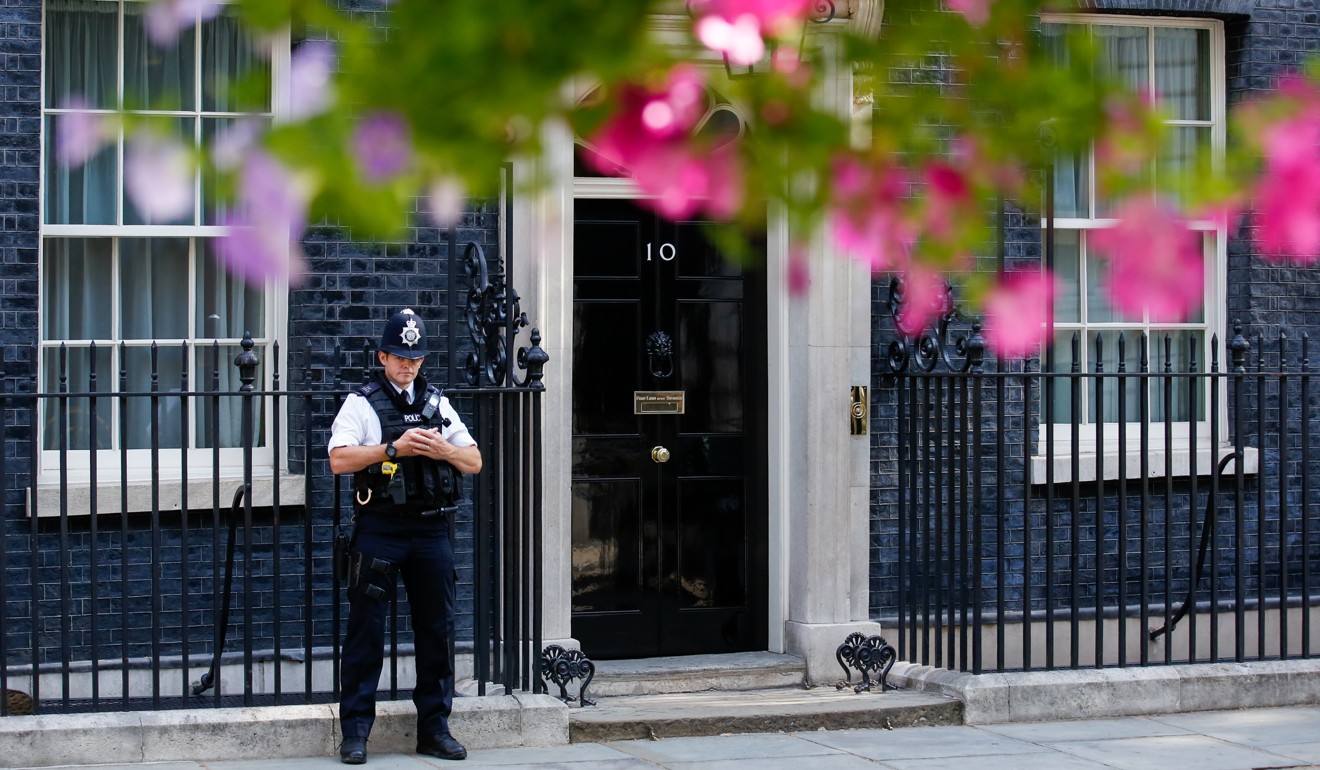
Plot to behead Theresa May in Islamic State-inspired suicide attack sees London man jailed
The 20-year-old was arrested in November after collecting what he thought was an explosives-packed backpack from undercover agents
A 20-year-old Londoner has been found guilty of plotting to kill British Prime Minister Theresa May in an Islamic State-inspired suicide attack on Downing Street.
Details of the violent plans of Naa’imur Zakariyah Rahman were heard at the Old Bailey, including a message on the Telegram app to a fake IS member on September 14 that read “Can you put me in a sleeper cell ASAP? I want to do a suicide bomb on Parliament. I want to attempt to kill Theresa May.”
The next day he said: “My objective is to take out my target. Nothing less than the death of the leaders of Parliament.”

Rahman had become the focus of a major undercover operation mounted by counterterrorism officers from the Metropolitan police and MI5, and had believed he was corresponding online with Islamic State while planning the attack. In fact he was talking to members of the security services.
The British-Bangladeshi, who has family in Birmingham and North London, was arrested in the capital on November 28, shortly after the last of a number of meetings with undercover police officers posing as terrorists, and where he had been provided with what he was told was a suicide vest and a bomb.
Man who encouraged ‘gruesome’ attacks on Prince George is jailed for life
He admitted midway through the trial to helping his friend, 22-year-old Mohammad Aqib Imran, join the Islamic State in Libya by recording an IS sponsorship video.
Imran, accused of planning to travel abroad either to Libya or Syria to engage in terrorism, was also found guilty of having a terrorist handbook after 13 hours of deliberations by the jury, which on Wednesday night was still considering a charge against him of preparing terrorist acts abroad.
Rahman came to the attention of police in August when he was arrested on suspicion of sending indecent images to underage girls, but was never charged. An examination of his mobile phone raised concerns that he may have been harbouring extremist views.
The trial heard that Rahman had been in contact with an uncle who had travelled to Syria and joined IS and who had encouraged his nephew to carry out attacks in Britain. His resolve to do something hardened over time and he was “tipped over” into doing so when he heard that his uncle had been killed in a drone strike.
How a London teenager plotted attacks with an all-female terror cell
His plans evolved to the point where he carried out reconnaissance around Whitehall last November and gave a backpack to an undercover police officer in the belief it would be fitted with explosives.
On November 28, the officer returned the backpack and coat – now containing dummy explosives – telling him he was “good to go”. Rahman was arrested as he walked away from the rendezvous in Kensington.
At times, Rahman cut a pitiful figure during the trial, which heard how he had been sleeping in the back of a car during much of the time he was plotting to kill senior politicians.
At other times, while job hunting or hoping to get on apprenticeship courses, he was living at home with his mother and confided to a fake Isis “emir” – in reality an intelligence agent – that he was sometimes struggling to slip out of the house without arousing suspicions.
Convicted, jailed, radicalised: why was Belgium killer on leave from jail?
Rahman had been known since late 2015 to the government’s Channel programme – aimed at intervening in the lives of those who may be at risk of violent radicalisation. Yet by the time of his arrest he had withdrawn from any engagement in the programme.
According to prosecutors, he had gone even further, seeking to portray himself as a self-styled “liberal” Muslim to avoid drawing any attention to his desire to wage violent jihad.

